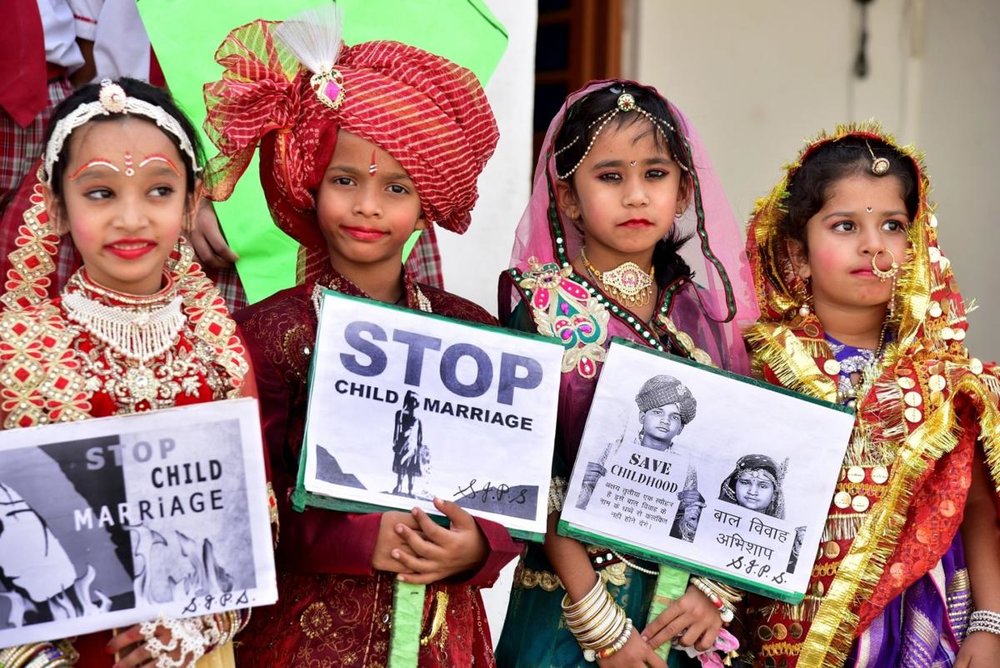Post written by Fallon Forrestel

This semester I have had the opportunity to work on my first global justice project by conducting research for Justice Ventures International (JVI).
JVI is a Christian organization that works on combatting human trafficking and other forms of extreme injustice. JVI partners with organizations in India to help poor and oppressed groups, particularly those involved in labor and sex trafficking. However, child marriage is also a prevalent issue in the country, and my group has been tasked with researching this topic.
Child Marriage Prohibition Act
In 2006, India passed the Child Marriage Prohibition Act, which defined a child marriage as one in which the girl is under eighteen or the boy is under twenty-one. It holds that offenders and guardians or parents associated with child marriage or negligent in preventing it are punishable.
Despite the Act’s passage, child marriage is still practiced frequently in India, especially due to financial hardships experienced during the COVID-19 pandemic.
My focus has been on researching Indian case law to determine how courts treat child marriage cases and summarize convictions or penalties obtained. Through my research, I have discovered that some courts are reluctant to address the issue of child marriage directly and avoid making it the central focus of the case. I have also seen courts, particularly the Supreme Court of India, which appear sympathetic to the purpose behind the Act and the need to enforce it.
Ultimately, my research has deepened my understanding of a culture very different from mine. I have read numerous cases in which a young girl has run off and eloped with an older man, and her parents are desperately asking the court to place her back in their custody. In many cases, the girl argues for her right to remain married and has testified that she was not coerced but freely married the man.
As I think back to when I was only fourteen, fifteen, sixteen, and so on, I can’t help but try to imagine what these victims must have been experiencing. Perhaps they were coerced into marriage and lied to appease their husband or family. In other cases, maybe they did freely enter into matrimony. Still, as young, impressionable girls, they had unrealistic views of what marriage would look like and could not fully understand how the decision would impact their life.
What My Research Has Taught Me
My research has educated me on an issue I was fairly unfamiliar with and allowed me to empathize with the girls I am reading about in a way I would not have expected. I feel blessed to have an opportunity to use my time in a way that will hopefully benefit JVI and its goal toward fighting against child marriage.
I have enjoyed spending each week on this project as it has allowed me to step back from the stress surrounding my law school studies and put time and energy toward an issue much more significant than an outline that needs updating or a reading assignment that needs to be completed.
I hope my group’s work on this project brings about a positive change to the issue of child marriage in India, even if it is only a small step in the right direction.
This post was written by a Center for Global Justice Student Staff member. The views expressed in this post do not necessarily reflect those of Regent University, Regent Law School, or the Center for Global Justice.

